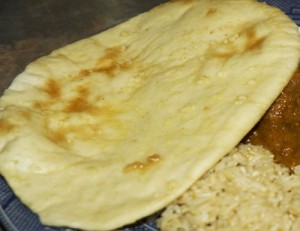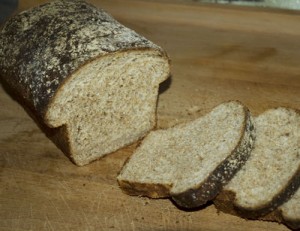There are a few choices when it comes to what kind of yeast home bakers have available to them. I only have experience with two kinds, instant yeast and active dry yeast. These are the most common yeasts called for in home baking recipes. When first learning how to bake bread I would follow each recipe to the letter. Since some recipes call for active dry yeast and others for instant, I simply made sure I had both on hand. This works, but it is a little inconvenient. Really, yeast is yeast. Which ever form you choose to use, it is the same organism and it will do the same thing to your dough. No matter what kind of yeast a recipe calls for, if you know how to substitute for your favourite kind, then you can confidently alter bread recipes.
So, What is the difference between different kinds of yeasts? Why choose one over the other? It is a matter of feel, ease of use, storage, and cost. Remember, no matter what kind you use you can get the same results as though you used another kind of yeast, but the way you use it will vary. Therefor I recommend trying a few different kinds until you find the one that suites your style best. Then you can learn how to substitute your type of yeast in recipes that call for another kind.
This is definitely not an exhaustive list, but here are a few common types of yeast that you may see in the grocery store.
Cake Yeast – This is the traditional fresh yeast known to home bakers from decades past. It is still widely available and is often used commercially, but sometimes harder to find than dry yeasts. It has a short shelf life, but can be frozen for a few months to keep it fresh a little longer. It is not called for in most home baking recipes these days, as other kinds of yeast are easier to use (I know, that is a subjective) and store better. Some people dissolve it in water before adding to the other dough ingredients, while others say it works just as well simply by crumbling it into the flour. I have never used this yeast myself.
Active Dry Yeast – This is the traditional dry yeast. It is sold in packets or jars and consists of small pellets that contain dried hibernating yeast. In order to use this yeast in a dough recipe, it must be activated by dissolving it in warm water (approximately 105 to 115 degrees F) usually with a little bit of sugar, to feed it. It is then allowed to “proof” for a few minutes until the water becomes foamy. This is when you will know that the yeast is alive and active. This form of yeast stays fresh for many months in the refrigerator and around a year and sometimes more, in the freezer.
Instant Yeast– This kind of yeast is very similar to active dry yeast. It comes in the same kind of packaging as active Dry, and looks the same except that the pellets are smaller. It also contains a small amount of yeast enhancers, mainly citric acid. This form of dry yeast can be added directly into the dry ingredients in any dough recipe. Since there is less surface area per pellet, the dampness of the dough is enough to dissolve them and activate the yeast. Ease of use is one definite benefit and another is cost. A jar of instant yeast (at least where I shop) is the same price for the same sized jar of active dry, yet you get about 25% more active yeast per volume in a measure of instant yeast. This is the yeast that I like best and is therefor, the type of yeast that most of my recipes will call for.
Bread Machine Yeast– This is exactly the same as instant yeast but is packaged to capitalize on the popularity of bread machines.
Rapid Rise – Basically the same thing as instant yeast but it contains a little more yeast enhancer. Generally this yeast should be used for simple breads that require only one rise, as the yeast will tire quickly. I do not recommend this yeast for my bread recipes.
So, as I mentioned, my favourite yeast is instant. You may have heard it said that by substituting active dry for instant yeast your dough will rise too quickly and therefor sacrifice flavour. This is true only if you sub for equal measure. The beautiful thing is you can get the exact same result with instant yeast as you would with active dry yeast by using LESS! So, if you have a recipe that calls for active dry yeast and want to use instant yeast with the same result, measure about 25% less instant yeast. So if the recipe calls for 1 teaspoon of active dry, simply measure 3/4 teaspoon instant yeast and add it directly to the dry ingredients.
Now, if the opposite is true of you and you prefer active dry yeast, you can easily substitute active dry yeast in any recipe that calls for instant yeast. All that you have to do is, for any measure called for of instant yeast, measure about 25% more of active dry. Whatever liquid called for in the recipe, be it milk or water or something else, simply warm a cup or so to about 110 degrees F and proof the yeast in the liquid (with a pinch of sugar) until it is foamy, then add it to the dry ingredients along with the rest of the liquid ingredients. In this way it will perform exactly as instant yeast would have in the recipe.
If you encounter a recipe that calls for fresh cake yeast you can easily substitute instant yeast by dividing the weight of the cake yeast by 3. This is the amount of instant yeast you should use in that recipe. Of course, if you prefer to use active dry yeast, simply add 25% to that result and you now have your active dry yeast measure for that recipe.
Whichever yeast you choose to use, be sure to store it properly to ensure your yeast is alive when you go to use it. Nothing sucks more than preparing a bread dough that refuses to rise because the yeast was dead.






Pingback: English Muffins | The Cooking Geek()
Pingback: Soft White Bread Dough | The Cooking Geek()
Pingback: Whole Wheat Bread Pan Loaf (Sandwich Loaf) | The Cooking Geek()